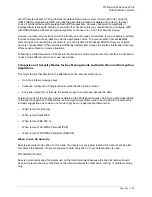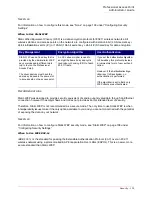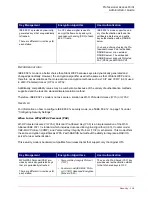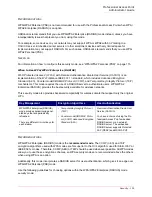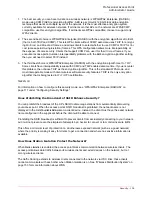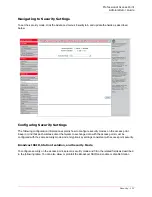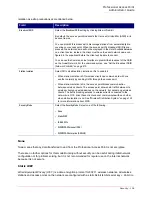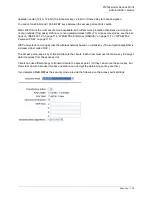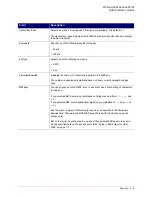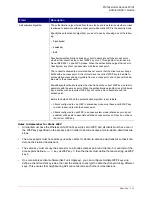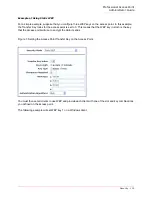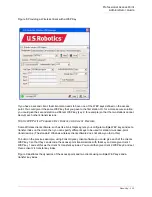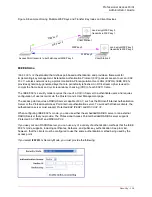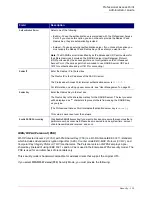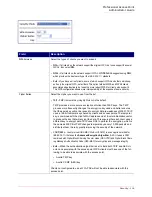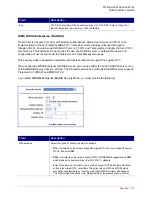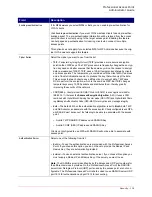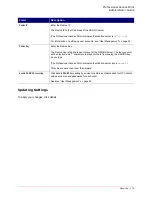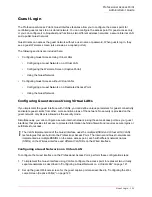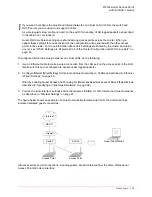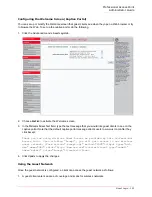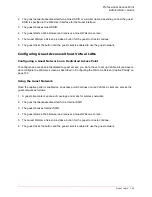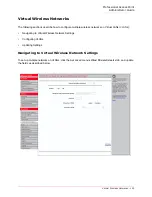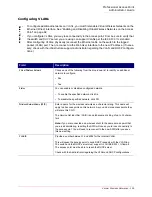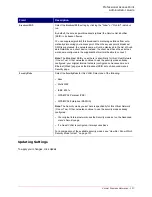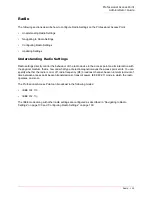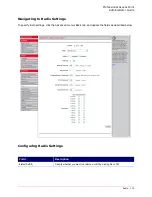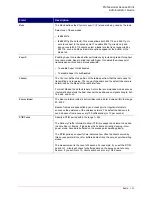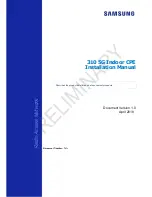
Professional Access Point
Administrator Guide
Security - 116
Field
Description
WPA Versions
Select the types of clients you want to support:
• WPA—
If all clients on the network support the original
WPA,
but none support the newer
WPA2
, then select
WPA
•
WPA2—
If all clients on the network support
WPA2
,
USRobotics
suggests using
WPA2
,
which provides the best security per the
IEEE
802.11i
standard.
•
Both—
If you have a mix of clients, some of which support
WPA2
and others which sup-
port only the original
WPA
, select
Both
. This option lets both WPA and WPA2 clients
associate and authenticate, but uses the more robust WPA2 for clients who support it.
This WPA configuration allows more interoperability, at the expense of some security.
Cipher Suites
Select the cipher you want to use from the list:
• TKIP—
TKIP
(Temporal Key Integrity Protocol
) is the default.
TKIP provides a more secure encryption solution than WEP keys. The TKIP
process more frequently changes the encryption key used and better ensures
that the same key will not be reused to encrypt data (a weakness of WEP). TKIP
uses a 128-bit temporal key shared by clients and access points. The temporal
key is combined with the client's MAC address and a 16-octet initialization vector
to produce the key that will encrypt the data. This ensures that each client uses a
different key to encrypt data. TKIP uses RC4 to perform the encryption, which is
the same as WEP. But TKIP changes temporal keys every 10,000 packets and
distributes them, thereby greatly improving the security of the network.
•
CCMP (AES
)—
Counter mode/CBC-MAC Protocol
(CCMP) is an encryption method for
IEEE
802.11i
that uses the
Advanced Encryption Algorithm
(
AES
). It uses a CCM
combined with Cipher Block Chaining Counter mode (CBC-CTR) and Cipher Block Chain-
ing Message Authentication Code (CBC-MAC) for encryption and message integrity.
•
Both
—When the authentication algorithm is set to
Both
, both TKIP and AES cli-
ents can associate with the access point. WPA clients must have one of the fol-
lowing to be able to associate with the access point:
• A valid TKIP key
• A valid CCMP (AES) key
Clients not configured to use a
WPA
-PSK will not be able to associate with the
access point.
Summary of Contents for Instant802 APSDK
Page 1: ...Professional Access Point Administrator Guide R46 1224 00 rev 2 0 07 06...
Page 2: ......
Page 4: ...Professional Access Point Administrator Guide iv...
Page 8: ...Professional Access Point Administrator Guide viii...
Page 42: ...Professional Access Point Administrator Guide Basic Settings 42...
Page 52: ...Professional Access Point Administrator Guide Access Points 52...
Page 58: ...Professional Access Point Administrator Guide User Management 58...
Page 62: ...Professional Access Point Administrator Guide Sessions 62...
Page 70: ...Professional Access Point Administrator Guide Channel Management 70...
Page 88: ...Professional Access Point Administrator Guide Neighboring Access Points 88...
Page 96: ...Professional Access Point Administrator Guide Ethernet Wired Settings 96...
Page 120: ...Professional Access Point Administrator Guide Security 120...
Page 128: ...Professional Access Point Administrator Guide Virtual Wireless Networks 128...
Page 134: ...Professional Access Point Administrator Guide Radio 134...
Page 138: ...Professional Access Point Administrator Guide MAC Filtering 138...
Page 152: ...Professional Access Point Administrator Guide Quality of Service 152...
Page 160: ...Professional Access Point Administrator Guide Wireless Distribution System 160...
Page 164: ...Professional Access Point Administrator Guide Time Protocol 164...
Page 170: ...Professional Access Point Administrator Guide SNMP 170...
Page 290: ...Professional Access Point Administrator Guide Configuration Troubleshooting 290...
Page 298: ...Professional Access Point Administrator Guide Regulatory Information 298...
Page 328: ...Professional Access Point Administrator Guide Index 328...

